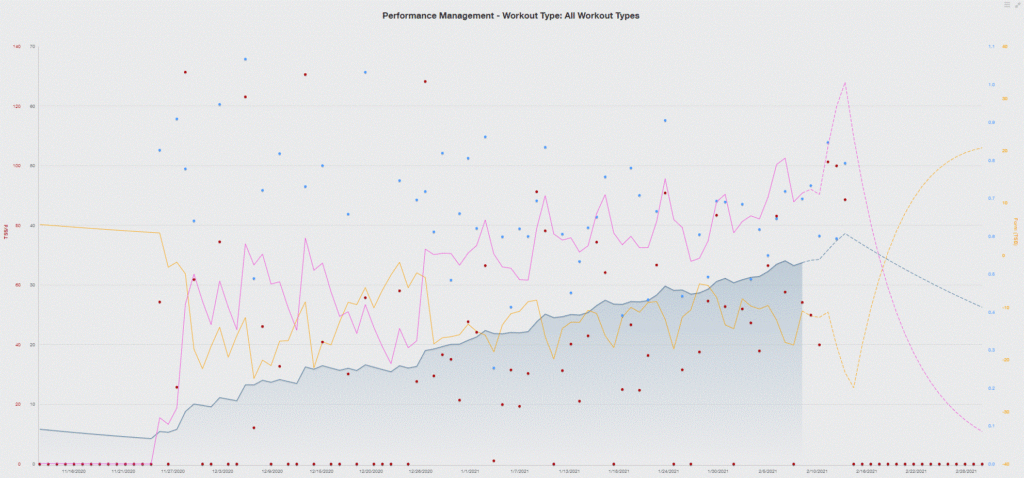Measuring Your Performance
Are you just starting your training and feel that you have improved a lot? You try to find find the best way to quantify your performance, but you find yourself bombarded with information about training and what to measure: power, speed, distance, cadence, stroke count and so on. You even tried subscribing to a service that is supposed to make it easier, but they give you even more numbers and graphs like the one below. What does it all mean?

Don’t worry, you are not alone. Ignore all the fancy terms, follow your training and pay attention to the basics.
Heart Rate
Athletes and coaches everywhere have literally poured hundreds of hours and miles into refining their training plan. Over the years experts have established the heart rate as the prime metric to measure for training. Based on decades of data from elite endurance athletes it was determined that at least 75-80% of your training volume must be below 80% of an athlete’s maximum heart rate. This is a significant shift from the old belief that 100% effort is required for every practice. So using a heart rate monitor is very important.
Once the training zones have been calculated and the thresholds have been established, it’s time to actually train within those established parameters. This may seem simple, but it is one of the most difficult factors for a new athlete. Staying within your zone 1 and 2 does not feel like training at all. Many can barely jog for 30 seconds before their heart rates go above the specified limit. Nonetheless, this is what is required to establish a solid base of fitness and minimize the chances of injury.
Distance
Once the heart rate zones have been established, it is time to put miles into the training. These initial miles might be slow, but the early phases of training is critical. It allows your body a chance to adjust to the increased activity. Your legs will hurt and your muscles will ache, but that is part of the acclimation process. Eventually, you will be able to run the needed miles without any issues.
Unfortunately, increasing your miles without a structured plan is a recipe for disaster. A proper training plan must be developed to increase mileage gradually and ensure your body is given the appropriate chance to adjust. The most common advice for building up weekly mileage is to increase by no more than 10 percent per week. Also, you should also plan to take an easy week about once a month where you decrease your overall volume by about 20 percent for that week.
Speed
After a good foundation has been established, it is time to measure speed. Speed is the crown jewel of all the performance metrics, but it’s a factor that must be approached carefully. Athletes who try to increase speed too quickly can jeopardize their training. Athletes risk injury when focusing on speed alone. An athlete must have good muscle endurance and form to minimize the chances of injury.
Other Metrics
Once the heart rate, distance and speed are properly monitored, all the other measurements will fall into place.
In swimming measuring the speed for every lap or every 100 meters is the metric of interest. This measures the athlete’s overall swimming ability. Another metric is measuring your ability in terms of strokes per length to see how much water you’re effectively pulling yourself through with each stroke. This simple to do and also allows you to see your efficiency in the water.
On the bike, power (measured in watts) is the key metric. Measured using a power meter, this is typically the most expensive metric to measure. It measures the amount of torque applied by the rider. Another performance indicator is cadence. This measures the number of revolutions the rider pedals in one minute. This metric is critical for riders since each athlete must find the balance between power and the rate of pedaling to produce the fastest speed.
Running is the simplest activity to measure. Measuring the heart rate, distance and speed is enough for most athletes. Getting those three metrics will provide clear indicators of improvement. However, for those that need additional indicators or performance, cadence and vertical oscillation can be measured. Cadence measures the turnover rate of the legs while vertical oscillation measures the distance your upper body bounces up and down with each step.


